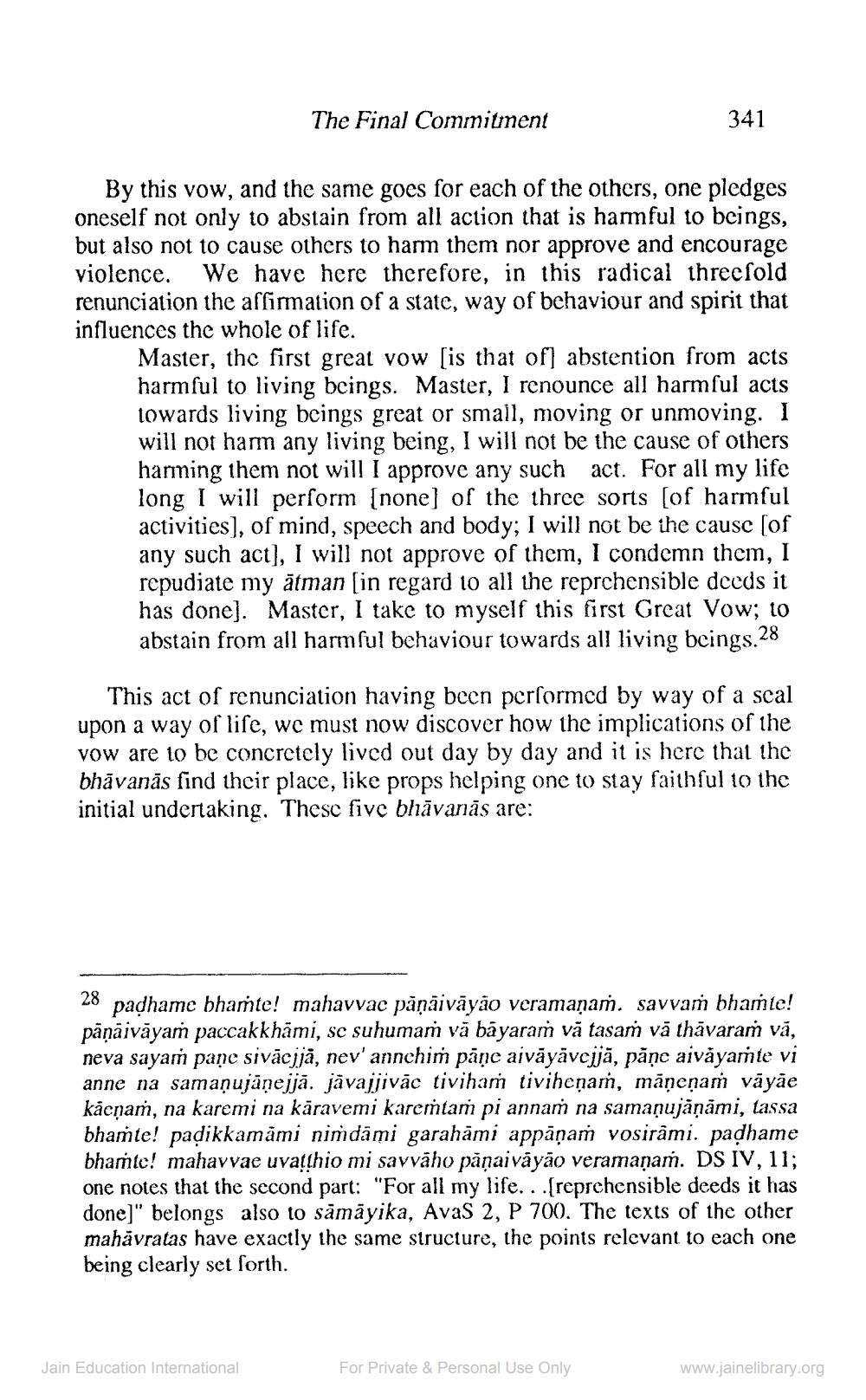________________
The Final Commitment
341
By this vow, and the same goes for each of the others, one pledges oneself not only to abstain from all action that is harmful to beings, but also not to cause others to harm them nor approve and encourage violence. We have here therefore, in this radical threefold renunciation the affirmation of a state, way of behaviour and spirit that influences the whole of life.
Master, the first great vow [is that of] abstention from acts harmful to living beings. Master, I renounce all harmful acts towards living beings great or small, moving or unmoving. I will not harm any living being, I will not be the cause of others harming them not will I approve any such act. For all my life long I will perform (none) of the three sorts [of harmful activities), of mind, speech and body; I will not be the cause (of any such act], I will not approve of them, I condemn them, I repudiate my ātman [in regard to all the reprchensible deeds it has done). Master, I take to myself this first Great Vow; 10 abstain from all harmful behaviour towards all living beings.28
This act of renunciation having been persormed by way of a scal upon a way of life, we must now discover how the implications of the vow are to be concretely lived out day by day and it is here that the bhāvanās find thcir place, like props helping one to stay faithful to the initial undertaking. These five bhāvanās are:
28 padhame bhaste! mahavvac pāņāivāyão veramaņań. savvam bhamte! pāņāivāyam paccakkhāmi, se suhumam vă bayaram vă tasaṁ vā thāvaram vă, neva sayam pane sivācjjä, nev' annehim pāņe aivāyāvejjā, pāņc aivayamte vi anne na samanujānejijā. jāvajjivāc tiviham tivihenar, māņenaṁ vāyāe kácnam, na karemi na kāravemi karestam pi annam na samaņujāņāmi, tassa bhamte! padikkamāmi nimdāmi garahāmi appāņam vosirâmi. padhame bhamte! mahavvae uvatthio mi savvāho pāņaivāyāo veramanań. DS IV, 11; one notes that the second part: "For all my life. . . {reprehensible deeds it has done]" belongs also to sāmāyika, AvaS 2, P 700. The texts of the other mahāvratas have exactly the same structure, the points relevant to each one being clearly set forth.
Jain Education International
For Private & Personal Use Only
www.jainelibrary.org




